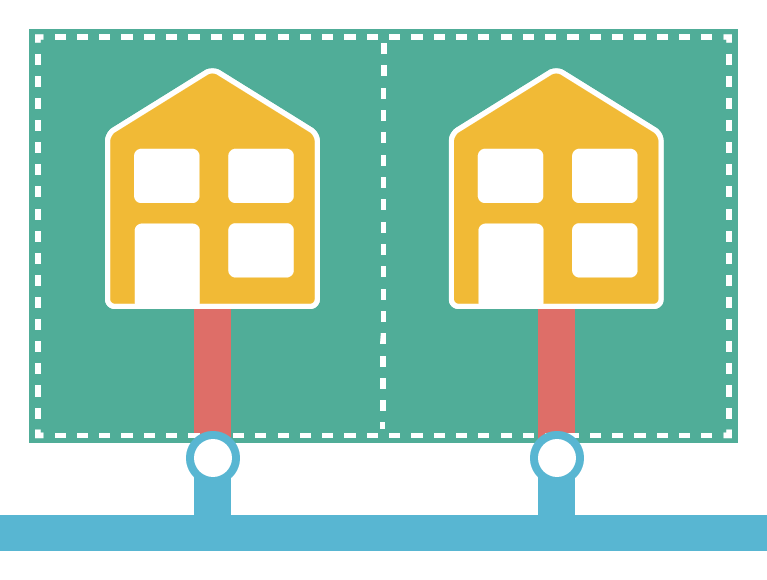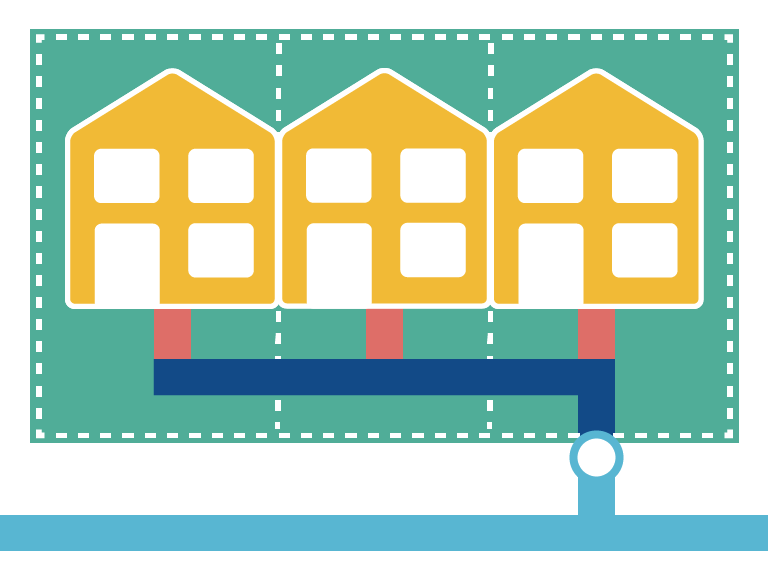Lead in drinking water
Lead can naturally occur in water, but it’s rare in the UK. Our water mains aren’t made of lead and we test our water at every stage of the treatment and distribution process to make sure it meets our strict drinking water standards.
The pipes that supply water to your home and the plumbing inside your house may contain lead. If water is left to stand in lead pipes, it absorbs small traces of the metal. If you’re exposed to too much lead it can be harmful to your health. It can be especially harmful for pregnant women and young children, so they should reduce their exposure as much as possible.
Do I have lead pipes in my home?
If your home was built before 1970, it may have lead pipes. If your home was built after 1970, it’s unlikely to have lead pipes because of a change in building regulations. If you’re unsure, it’s easy to see what your pipes are made of. Look in and behind your cupboards and find the pipe leading to the kitchen tap.
- Lead pipes are a dull grey colour and they’re soft. If you gently scrape the pipe, you’ll see the shiny, silver-coloured metal underneath.
- Copper pipes are hard and a bright or dull brown colour.
- Iron pipes are dark, very hard and might be rusty.
- Plastic pipes are usually blue, but they might be grey or black.
How do I know how much lead is in my tap water?
If you’re worried about the amount of lead in your tap water, you can get in touch and we’ll test a sample of your water for free. If we find more than 10 µg/l of lead in your water, we’ll tell you how you can reduce it, and if the pipe supplying your home is made from lead, we'll replace our bit for free as well.
How can I reduce the amount of lead in my tap water?
If you’ve got lead pipes in your home, water that’s been standing in your pipes for a long time shouldn’t be used for drinking, cooking or preparing bottles for babies. If it’s first thing in the morning or you’ve been out all day, fill up a washing-up bowl to get rid of this water - you can use it to water your plants! You can then use your tap water as normal.
If you’re looking for a more effective longer-term solution, you might want to think about replacing your lead pipes with plastic or copper ones. This can be expensive, but you might be able to get a grant from your local council to help with the cost.
Who’s responsible for replacing lead pipes?
As a homeowner, you’re responsible for all the pipework up to the boundary of your home.
This includes:
- the pipe between your home and the street boundary (the supply pipe)
- stop taps on your property (inside or outside)
- all the plumbing in your home.
If you share a supply pipe with your neighbours, you’re jointly responsible for the pipe.
At Yorkshire Water, we’re responsible for all the pipework outside the boundary of your home.
This includes:
- water mains
- stop taps in the road or pavement
- the pipe between the main boundary of the street (the communication pipe).
Detached homes

Terraced homes

Property boundary
![]()
Homeowner's responsibility
Water supply pipe
![]()
Joint homeowners’ responsibility
Common supply pipe
![]()
Yorkshire Water’s responsibility
Mains pipe, communication pipe and external stop tap
![]()
How do I get a lead pipe replaced?
First things first – take a look at our Guide to Lead Pipe Replacement to understand what you need to do:
Guide to lead pipe replacement (PDF)
You can read this document in your browser or download it.
If your home is supplied by a lead pipe, we’ll replace the pipework in the public highway under our lead renewal scheme. This covers the lead pipework from the public water main in your street up to the boundary of your property.
You’ll need to fill out the application form below so that we can confirm the pipe is lead and understand the work requirements:
Application for lead pipe replacement (PDF)
You can download and print this PDF or fill it out using Adobe Acrobat Reader.
Once we’ve assessed your application and got back to you with next steps, you’ll be responsible for replacing the lead pipe within your property boundary. This includes the external area, such as your garden or driveway. We highly recommend using a qualified contractor to carry out this work. Please wait until we’ve responded to your application before arranging any work, as your new private pipework will need to meet our requirements before we can connect you back up to the public water supply.
What we’re doing
Thousands of homes in Leeds, Doncaster, Featherstone, Wakefield, Hull and Withernsea will soon have their old lead water supply pipes refurbished to meet new European standards. We’re also planning to renew any lead pipes that supply schools or customers on our Priority Service Register.
We’re making these changes with the help of our partners Morrison Utility Services, O’Connor Utilities Ltd, Fastflow Pipeline Services Ltd and Network Plus Services Ltd.
How we’ll do the work
We refurbish lead pipes by digging two holes, one at your property boundary and one where the communication pipe connects to the water main in the street. The pipe will be refurbished between these two points. We’ll be working on several pipes at the same time, so there’ll be lots of holes in your street while we work.
If there are lots of other pipes and cables in the way, we might need to dig a bigger, longer hole.
We aim to fill in these holes and put the street back to normal within three days.
How you'll be affected
If we’re coming to work on your street, we’ll let you know when your water supply will be interrupted.
If your home was built before 1966, it might be earthed by the metal water supply (unless it’s been reviewed since). If you think your home might be earthed this way, we recommend you get in touch with an electrician or your electricity provider to make sure your home is earthed properly. We’re not responsible for earthing your home.

